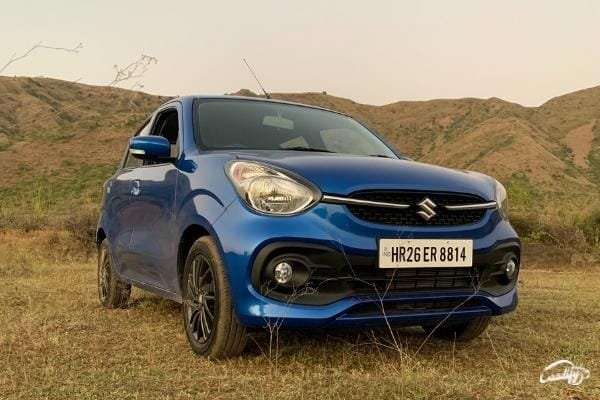Tata has always offered something unique in the SUV segment. We have seen Sierra, Sumo, Hexa, Safari, Aria from Tata Motors in India. Though Tata never got huge success with any of their products, they always had some kind of followings who found Tata offerings better than its competitors. In 2018, Tata introduced one more SUV based on Concept H5X dubbed as 'Harrier". Unlike its elder siblings, the Harrier is a front-wheel-drive car. In starting, many anticipated Harrier as the direct rival of Hyundai Creta and Renault Duster but it was bigger and had more SUVish tricks up its sleeves. Hence, Its direct competition is with the Jeep Compass. Intact Harrier is powered by the same fiat-sourced diesel motor which also moves the Jeep Compass and MG Hector.

At the time of launch, Harrier's power figures were 33PS down compared to the Compass. But in early 2020, Tata upgraded the well-styled beast on BS6 emission norms with more power, better features and an automatic transmission on the plate. So, has the latest update made any changes to driving experience? Has it truly became a premium SUV? Let's find out all the answers.
Note: Tata Motors had given us the Harrier AT for 26 hours only and all the cost incurred in Shoot/Review was borne by GaadiFy.
2020 Tata Harrier: Exterior

- The Tata Harrier looks stunning. It has the character to catch your eyeballs. It feels really big from all the angles. It is bigger than Jeep Compass and Honda CR-V and almost the same in dimensions when you compare with Hector. (Harrier is wider, Hector is longer).
- The SUVish elements are everywhere and use of heavy cladding all around gives it a macho and bold character.
- Its approach and departure angles are good as per moderated off-roading.
- The Harrier is based on a modified Land Rover D8 platform and from certain angles, visually you might get some LR feels.

- Underbody, a plastic engine guard hangs very low but that won’t cost much if you break it during off-roading. Other important parts are protected very well for an FWD car.

- There are issues of panel gaps and this has been with almost every Tata car we have seen so far. Being a car of 20 lakh bracket, it disappoints. Tata needs to pay attention to this.
- It gets split headlamps setup. The low beams of Harrier comprise Xenon HIDs and high beams are Halogen. The throw is good but LED lights will be a welcome change.
- There are no parking sensors in the front which again a disappointing factor. For this, you can go with an aftermarket accessory.
- It gets new machined-cut 17-inch alloys wheels which remarkably complements its overall design.
- The paint quality of 2020 Harrier is really good and If you can afford to get it treated with aftermarket paint protection things like Ceramic coating, the shine of the paint would last-long for a couple of years with some added advantages.
Interior

- The Tata Harrier is very neat in terms of interior design and you will love the way it looks.
- Its cabin feels big and spacious.
- The plastic quality of the interior is inconsistent but it feels tough almost everywhere.

- It also gets some feels good elements like wooden finished panel on the dash, soft material on the door trims.
- Panel gaps are evident here as well. Compared to its rivals, Harrier's fit and finish issues might lower the satisfaction levels of its buyers.

- Seats are comfortable and provide ample amount of headroom, legroom and knee room. However, the under-thigh support might lack for taller or bulky passengers.
Ergonomics

- Everything is laid very well from the driver seat. However, the horn pad is the only major issue. It does not respond whenever you press it on the sides of the pad.
- People with manual gearbox variant might face the issue of their left knee brushing against the dashboard.

- Space is cramped in the footwell and that can be a problem in manual variants.
Safety
- Tata Harrier is loaded with safety features. One good that we all should appreciate about Tata Motors is its commitment to safety in all its offerings.
- It gets an advanced Electronic Stability Programme system with 14 additional functionalities. Some of them are limited to Tata Harrier only in the segment. While we can’t test them all but they really work in favour of Indian offering.

- It also offers 6 Airbags.
- It doesn't offer disc brakes in the rear but you won't feel any lag in braking bite.
Features
- The top-spec Harrier gets a host of comfort and convenience features as well. Though not as much as its rivals. It mainly includes keyless entry, the engine starts/stop button, digital MID, multiple driving modes (Eco, City and Sport), ECM, panoramic sunroof, powered Driver Seat, 9 JBL speaker sound system, automatic climate control, rear AC vents, adjustable headrests for both rows, electrically adjustable and foldable ORVMs, front and rear armrest, 8.8-inch horizontal touchscreen infotainment system with android auto and apple carplay, etc.

- It misses out on some features like front parking sensors, 360-degree camera, ventilated seats, wireless charging etc.

- We had no issues with the screen quality and clarity, however, the touch response is slow. There are physical buttons underneath the screen to control the infotainment which is really helpful especially in solo driving conditions and don’t need you to take your eyes off the road.
- The picture quality of the reverse camera is not up to the mark.
Engine & Gearbox

- Underneath the skin, the Tata Harrier gets Fiat-sourced 2.0-litre Multijet diesel engine. With the BS6 updated, the power figures of the CI motor bounced up from 140PS to 170PS. However, the torque is unchanged (350Nm), adequate for an SUV of this size.
- Gearbox options include a 6-speed Manual and a Hyundai sourced 6-speed torque converter automatic transmission (AT).
- Having driven both, I feel AT makes more sense which is available with XM, XZ, and XZ+ variant only.
- With the BS6 update, the engine performance of Harrier has improved a lot.
- As mentioned earlier, the Harrier gets three driving modes which work really well. You will feel the performance gap between them.

- In city mode, the engine always has power for everything, while the Eco mode might save some bucks by offering you slightly more fuel efficiency.
- There is a sport mode as well, on which the engine feels more energetic and responsive.
- The automatic gearbox does its duty very beautifully. It feels always in the right gear.
- NVH levels are very well contained. You might feel vibrations on the steering wheel when you halt on a red light or when you put the car in reverse. The engine noise is audible inside the cabin post 3000rpm. Still much better than BS4 Harrier.
Ride, Handling, and Suspension:
- The ride quality of Tata Harrier SUV can be considered its USP. Its stability is commendable. It feels perfectly planted on the roads even on the three-digit speeds and you won't lose your confidence through sharp cornering.
- Suspensions are slightly stiffer in comparison to BS4 Harrier and that only makes it better.
- In comparison to the other cars of the segment, the MG Hector feels better in riding comfort front but Harrier is more practical if you are the one who drives as well.
- The handling or steering response is something that we don't like much. On city speeds, it feels weighted and as you catch some speed, it feels relatively lighter. Being a hydraulic steering unit it is expected to have a direct feel but unfortunately, it is weak on this subject.
Off-roading
- Harrier is a front-wheel-drive (FWD) SUV. We don’t expect much from a front-wheel-drive car. But, it’s that chassis that does wonders.
- The Harrier is genuinely capable to do some good off-roading. However, don’t expect it to perform like an RWD or AWD car.

- If you are skilled, you will get out of some tricky situations with its torquey engine. It also gets traction modes like wet and rough, which eventually add more support during off-road situations.
Warranty & Maintenance
- Customers have often raised issues of poor electric components and higher service costs of Tata cars and this has always been an issue. Tata Motors is trying to assure customers this time with some added warranty packages.
- The Harrier comes with a 2 years / 1,00,000 Km standard warranty. You can also buy an extended warranty plan of up to 5 years.
- Since some parts of Harrier are borrowed from various OEMs, expect heavy bills if your car asks for part replacements.
Who Should Buy?
Someone,
- who wants an SUV that poses a great road appearance.
- who goes off the road frequently on some unstable terrains. (However, FWD cars are not suitable for this)
- whose preference is the comfortable ride quality over agile handling.
If you are looking for more off-roading ability and agile nature then you should look for another car.




